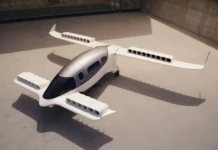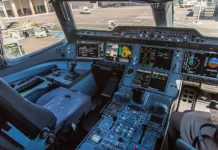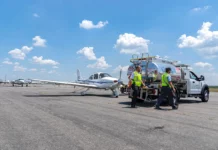The FAA is moving forward to integrate autonomous aircraft into the National Airspace System — at an excruciatingly slow speed for operators eager to use unmanned aerial systems, but perhaps still too fast for pilots worried about safety and separation. The six sites are in Alaska, Nevada, North Dakota, Texas, New York, and Virginia. The FAA wants to see data showing that UASs can operate safely amid manned aircraft, and said the testing will continue until at least February 2017. The FAA also said it will establish rules to protect privacy as well as to ensure safe operations.
Last March, the National Transportation Safety Board issued five safety alerts aimed at general aviation, and in December, the board followed up with five more. The alerts focus attention on the most common risk factors the NTSB has identified. Each alert comprises a brief information sheet that explains the issue and suggests practical remedies. The board also has been posting short online videos to explain its concerns. The newest series of alerts targets shoulder harnesses, carburetor icing, ELTs, unsecured items in the cockpit, and fiber self-locking nuts. The alerts are posted online at http://www.ntsb.gov/safety/safety_alerts.html.
Virgin Galactic continued testing its space-tourist aircraft, with plans to complete its first spaceflights with passengers by the end of this year. In January, SpaceShipTwo reached Mach 1.4 and 71,000 feet, after launching from Mojave Spaceport and hitching a ride to 46,000 feet from the mothership, Eve. Test pilot Dave Mackay said the ship flew “brilliantly.” The crew tested the ship’s reaction control systems and articulated the craft’s feathering tail, which will be used to moderate the initial descent from space. “With each flight test, we are progressively closer to our target of starting commercial service in 2014,” said Virgin Galactic CEO George Whitesides.
At last year’s AOPA Summit in Texas, the organization’s new president, Mark Baker, said the annual event would be replaced with a series of fly-ins around the country. In January, he announced the new schedule. The events will be open to all, with free meals for AOPA members and a roster of attractions including exhibits, static aircraft displays, flying activities, safety clinics, a “Learn to Fly” area, and a chance to visit with AOPA staff and program specialists. The regional events will be held in Texas, Indiana, Massachusetts, Washington, California, and Georgia, between April and November, plus a “Homecoming” event at AOPA’s Maryland headquarters in October.
The search for pristine Spitfires that some believe were hidden in Burma after World War II has resumed. David Cundall, an aviation enthusiast from the U.K., suspended the search last year after disappointing results, but now is back with a new sponsor. The Claridon Group, a British freight-handling business with an office in Burma, now is backing the project. Chris Scott, managing director of Claridon, said after meeting Cundall, “and seeing his deep-rooted passion for preserving part of our history and heritage for generations to come, we just had to get involved… We will be supporting David every step of the way and look forward to bringing the Spitfires back home for him.” Cundall said he has new evidence to bolster his search, and believes up to three dozen airplanes might be awaiting discovery.
The EAA said that bush planes from Alaska’s Valdez STOL contest will fly at 2014 AirVenture…Bombardier laid off 1700 workers in January, citing slow sales and delays in the CSeries airliner and Learjet 85 programs…After quickly selling out several small batches, Van’s is continuously producing factory-built RV-12s…Mooney resumed production, on hiatus since 2008, with an infusion of cash from new Chinese ownership…Embraer flew its Legacy 450 mid-light business jet for the first time, in December…Facing rising costs and insurance demands, the Reno Air Races Association cut staff, including the CEO…See breaking news in general aviation at www.avweb.com.




